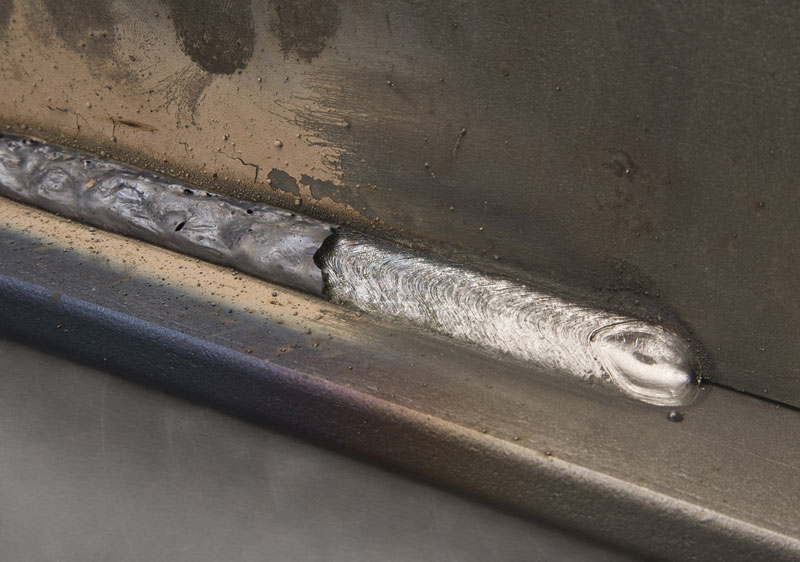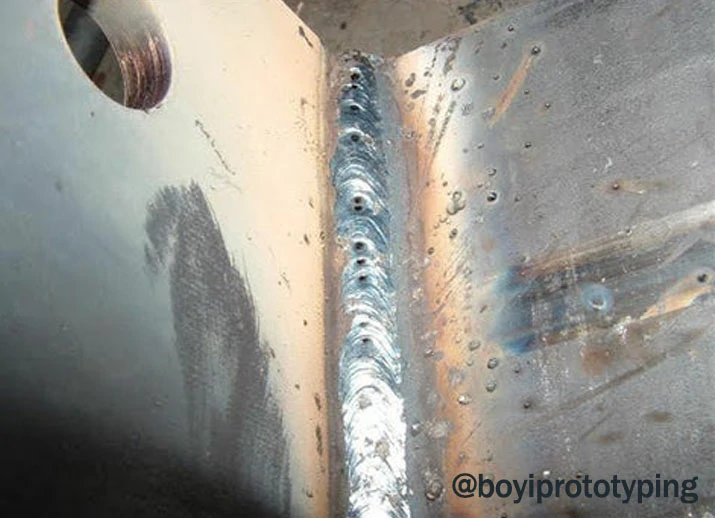Understanding Porosity in Welding: Exploring Reasons, Results, and Prevention Methods
Porosity in welding is a relentless challenge that can significantly influence the quality and stability of welds. As professionals in the welding sector are well aware, recognizing the reasons, results, and prevention strategies associated with porosity is vital for attaining robust and dependable welds. By delving right into the source of porosity, examining its destructive results on weld quality, and checking out efficient prevention strategies, welders can improve their knowledge and abilities to generate high-quality welds continually. The complex interplay of variables adding to porosity calls for a thorough understanding and a proactive strategy to make sure successful welding end results.
Typical Root Causes Of Porosity
Contamination, in the form of dust, oil, or rust on the welding surface, creates gas pockets when heated up, leading to porosity in the weld. Inappropriate securing takes place when the shielding gas, generally used in processes like MIG and TIG welding, is unable to completely shield the molten weld swimming pool from reacting with the bordering air, resulting in gas entrapment and subsequent porosity. In addition, inadequate gas insurance coverage, typically due to incorrect flow rates or nozzle positioning, can leave components of the weld unprotected, permitting porosity to develop.
Results on Weld Quality
The presence of porosity in a weld can dramatically endanger the general high quality and stability of the welded joint. Porosity within a weld produces spaces or cavities that weaken the structure, making it extra susceptible to cracking, deterioration, and mechanical failing.
Moreover, porosity can hinder the efficiency of non-destructive testing (NDT) strategies, making it testing to discover other defects or suspensions within the weld. This can lead to substantial security concerns, especially in critical applications where the architectural stability of the bonded components is extremely important.

Avoidance Techniques Summary
Given the destructive impact of porosity on weld quality, effective avoidance methods are essential to preserving the structural honesty of bonded joints. Additionally, selecting the proper welding criteria, such as voltage, present, and travel rate, can assist minimize the risk of porosity development. By integrating these prevention techniques right into welding practices, the occurrence of porosity can be substantially decreased, leading to more powerful and much more reputable welded joints.
Relevance of Appropriate Protecting
Appropriate shielding in welding plays a vital duty in stopping climatic visit our website contamination and guaranteeing the honesty of welded joints. Securing gases, such as argon, helium, or a mix of both, are generally utilized to shield the weld swimming pool from reacting with elements airborne like oxygen and nitrogen. When these reactive aspects enter into contact with the hot weld swimming pool, they can cause porosity, bring about weak welds with decreased mechanical visit the site residential or commercial properties.

Insufficient protecting can get redirected here lead to different flaws like porosity, spatter, and oxidation, compromising the structural integrity of the bonded joint. Adhering to proper securing practices is necessary to create top quality welds with minimal issues and make sure the durability and integrity of the welded parts.
Tracking and Control Methods
How can welders efficiently monitor and regulate the welding process to make certain ideal outcomes and stop defects like porosity? One key approach is through making use of sophisticated monitoring modern technologies. These can include real-time surveillance systems that provide feedback on specifications such as voltage, current, travel rate, and gas flow rates. By continuously checking these variables, welders can identify discrepancies from the excellent problems and make instant changes to avoid porosity development.

Furthermore, executing proper training programs for welders is vital for keeping an eye on and regulating the welding procedure effectively. What is Porosity. Educating welders on the value of preserving constant criteria, such as correct gas securing and take a trip rate, can aid protect against porosity concerns. Normal evaluations and qualifications can additionally make certain that welders excel in tracking and controlling welding processes
In addition, making use of automated welding systems can enhance surveillance and control capacities. These systems can specifically control welding criteria, reducing the likelihood of human mistake and making sure constant weld quality. By combining advanced surveillance innovations, training programs, and automated systems, welders can efficiently monitor and control the welding procedure to reduce porosity problems and accomplish top quality welds.
Final Thought
